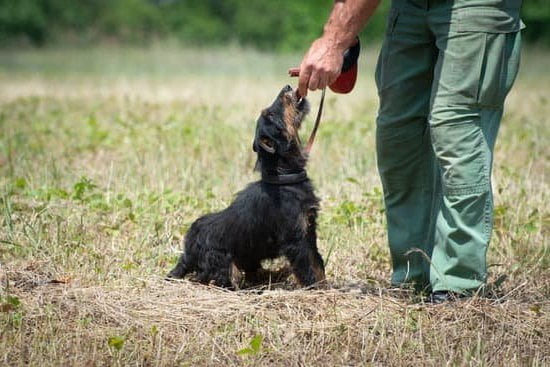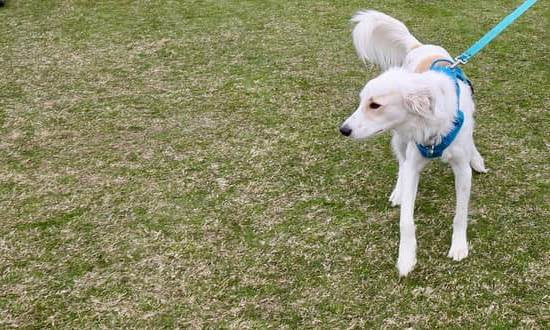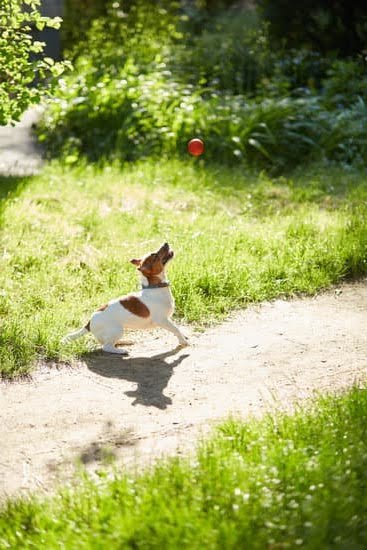Whistle training for dogs has become a popular and effective method for teaching and communicating with our furry companions. In this comprehensive guide, we will explore the ins and outs of whistle training, from understanding its purpose to advanced techniques and real-life success stories. Whether you are a new pet owner or a seasoned trainer, this article will provide valuable insights into incorporating whistle training into your dog’s obedience regimen.
The key to successful whistle training lies in understanding its purpose and choosing the right dog whistle. With the right approach, you can effectively teach your dog to respond to the whistle and incorporate it into various obedience commands. Additionally, we will address common issues that may arise during whistle training and provide troubleshooting tips to overcome them.
Furthermore, we will delve into advanced whistle training techniques and explore the numerous benefits of incorporating this method into your dog’s training routine. To illustrate the effectiveness of whistle training, we will also share real-life success stories from dog owners who have experienced remarkable results with their furry friends. Lastly, we will provide resources for further learning on whistle training for dogs, empowering you to enhance your canine companion’s behavior and responsiveness through this innovative training method.
Understanding the Purpose of Whistle Training
Whistle training for dogs serves a variety of purposes, all aimed at improving the communication and obedience between dog and owner. Whether used for hunting, agility training, or general obedience, the purpose of whistle training is to create a clear and consistent means of communication with your canine companion. With the right techniques and consistency, whistle training can be an effective way to get your dog to respond quickly and reliably.
- Improved Communication: Whistle training provides a distinct sound that cuts through other noises, making it easier for your dog to hear and understand commands, especially over long distances.
- Enhanced Obedience: By incorporating whistle signals into your dog’s training regimen, you are giving them an additional cue to follow commands, reinforcing their understanding and response.
- Increased Safety: Whistle training can be crucial in keeping your dog safe in outdoor settings, allowing you to call them back quickly in potentially dangerous situations such as crossing roads or avoiding wildlife.
When used effectively, a dog whistle can make all the difference in maintaining control and ensuring the safety of your furry friend.
Choosing the Right Dog Whistle
When it comes to whistle training for dogs, choosing the right dog whistle is crucial for successful training. There are various types of dog whistles available on the market, and it’s essential to select one that suits your dog’s breed, temperament, and your training goals.
Types of Dog Whistles
There are two main types of dog whistles: silent whistles and audible whistles. Silent whistles emit a sound that is not heard by humans but can be heard by dogs. Audible whistles, on the other hand, produce a sound that is also audible to humans. Both types have their advantages and disadvantages, so it’s important to consider which type would be most effective for your specific training needs.
Consider Your Dog’s Sensitivity
When choosing a dog whistle, consider your dog’s sensitivity to sound. Some dogs may be more sensitive to higher frequencies, while others may not respond well to certain pitches. It’s essential to test out different whistles and observe your dog’s response to determine which one is most suitable for them.
Quality and Durability
It’s also crucial to invest in a high-quality and durable dog whistle. Look for a whistle made from sturdy materials that can withstand outdoor conditions and daily use. A well-made whistle will ensure longevity and reliability during training sessions.
By carefully considering the type of whistle, your dog’s sensitivity to sound, and the quality of the product, you can choose the right dog whistle for effective whistle training for dogs. Each dog is unique, so it may take some trial and error before finding the perfect fit – but once you do, you’ll be on your way towards successful whistle training.
Teaching Your Dog to Respond to the Whistle
Understanding the Whistle as a Cue
When teaching your dog to respond to the whistle, it’s important to help them understand that the sound of the whistle serves as a cue for them to come to you. Start by associating the sound of the whistle with something positive, such as their favorite treats or toys. Use a high-pitched, pea-less whistle that carries well over distance for maximum effectiveness.
Positive Reinforcement and Repetition
As with any training technique, positive reinforcement and repetition are key. Begin by blowing the whistle and immediately rewarding your dog with a treat or praise when they come to you. Repeat this process multiple times throughout each training session, gradually lengthening the distance between you and your dog. Over time, they will learn to associate the sound of the whistle with their rewarded behavior.
Consistency Is Key
Consistency is crucial when teaching your dog to respond to the whistle. Use the same command consistently every time you blow the whistle, such as “come” or “here”. Additionally, ensure that everyone in your household who interacts with your dog uses consistent cues and signals when practicing whistle training. With patience and consistency, your dog will soon learn to reliably come whenever they hear the sound of the whistle.
Incorporating Whistle Training Into Obedience Commands
When it comes to training your dog, incorporating whistle training into obedience commands can be a powerful tool in enhancing their responsiveness and overall behavior. By using a whistle to communicate specific commands, you can create a clear and consistent language that your dog will easily understand and respond to.
Here are some ways to effectively incorporate whistle training into obedience commands:
- Start with basic commands: Begin by using the whistle for basic obedience commands such as sit, stay, come, and heel. Pair the whistle signal with the verbal command and reinforce with treats or praise.
- Consistency is key: Use the same whistle signal for each specific command to avoid confusion. Dogs thrive on routine and consistency, so be sure to use the same signals each time you give a command.
- Gradually phase out verbal cues: Over time, as your dog becomes more familiar with the whistle signals, start phasing out the verbal cues and rely solely on the whistle for obedience commands.
Incorporating whistle training into obedience commands not only adds an extra layer of communication between you and your dog but also provides them with mental stimulation and engagement. It strengthens their ability to follow instructions regardless of distractions around them. With patience, consistency, and positive reinforcement, you can effectively integrate whistle training into your dog’s obedience routine.
Explore advanced obedience techniques: Once your dog has mastered basic obedience commands with the whistle, you can progress to more advanced techniques such as off-leash control, distance control, and directional control using specialized whistle signals. This level of communication empowers both you and your dog, setting a strong foundation for a harmonious relationship based on understanding and trust.
Troubleshooting Common Issues With Whistle Training
Whistle training for dogs can be an effective way to communicate with your pet, but like any form of training, it may come with its own set of challenges. Common issues that dog owners may encounter during whistle training include lack of response, confusion, or even fear of the whistle. These issues can be frustrating, but with patience and consistency, they can be overcome.
One common issue when starting whistle training is when the dog does not respond to the whistle. This often occurs because the dog has not yet associated the sound of the whistle with a specific command or action. To address this, it’s important to start with basic obedience commands and use positive reinforcement when the dog responds correctly to the whistle. Consistency is key in reinforcing this association between the whistle and desired behavior.
Another issue that may arise is confusion on the part of the dog. This can happen if multiple people are using different commands or signals with the whistle, leading to mixed signals for the dog. To avoid confusion, it’s important for all handlers to use consistent commands and signals when using a whistle for training purposes.
In some cases, dogs may exhibit fear or aversion to the sound of the whistle. This can happen if a loud or high-pitched whistle is used initially without proper introduction and conditioning. If this occurs, it’s important to introduce the sound gradually and always pair it with positive experiences such as treats or playtime. Slowly acclimating the dog to the sound can help alleviate their fear over time.
| Common Issues | Resolution |
|---|---|
| Lack of Response | Associate whistle with specific command and use positive reinforcement |
| Confusion | Use consistent commands and signals among handlers |
| Fear of Whistle | Gradually introduce sound while pairing it with positive experiences |
Advanced Whistle Training Techniques
Once your dog has mastered the basics of responding to the whistle, you can start implementing more advanced training techniques to further enhance their skills. One effective technique is using different whistle patterns and sequences to convey specific commands or signals to your dog. For example, you can teach your dog to come to you with a series of short, quick whistle blows, or to stop and sit with a long, sustained whistle.
Another advanced technique is distance training, where you gradually increase the distance between you and your dog while using the whistle to signal commands. This can be particularly useful for activities like hunting or herding, where clear and consistent communication over long distances is essential. It requires patience and consistency, but with practice, your dog will learn to respond to the whistle regardless of how far away they are from you.
Additionally, some dog owners choose to incorporate hand signals along with whistle commands for added reinforcement and clarity. By pairing visual cues with auditory signals, dogs can better understand what is expected of them in different situations. This approach can be especially beneficial for working dogs or those involved in competitive obedience trials.
Overall, advanced whistle training techniques can take your dog’s obedience and responsiveness to a whole new level. With patience, consistency, and the right approach, you can help your canine companion become even more reliable in following commands through whistle training.
| Whistle Training Technique | Description |
|---|---|
| Pattern and Sequences | Using different whistle patterns and sequences for specific commands. |
| Distance Training | Increasing the distance between trainer and dog while signaling commands via whistle. |
| Hand Signals Integration | Incorporating visual cues alongside auditory signals for clearer communication with the dog. |
The Benefits of Whistle Training for Dogs
Whistle training for dogs offers a wide range of benefits for both pets and owners alike. One of the main advantages of using a whistle for dog training is its ability to provide a consistent and clear signal to your furry companion, regardless of the surrounding noise or distractions. Unlike verbal commands, which can be easily muffled or misunderstood, a whistle produces a distinct sound that can be easily recognized by your dog, making it an effective tool for communication.
Additionally, whistle training can greatly enhance your dog’s responsiveness and reliability in various situations. By using a whistle as part of their training regimen, dogs can learn to associate the sound with specific behaviors or commands.
This can be especially useful during off-leash activities such as hiking or hunting, where verbal cues may not be as effective over long distances. The use of a whistle also allows for more precise control and direction, helping to strengthen the bond between you and your pet while ensuring their safety and well-being.
Furthermore, incorporating whistle training into your dog’s routine can promote mental stimulation and engagement. Learning to respond to the whistle requires focus and concentration from your dog, encouraging them to remain attentive and responsive to your commands.
This mental stimulation can be highly beneficial for your pet’s overall well-being, providing them with a sense of purpose and accomplishment as they master new skills through whistle training. As such, many owners find that incorporating whistle training into their dog’s daily activities not only improves obedience and responsiveness but also enhances their overall quality of life.
Real-Life Success Stories From Dog Owners
One dog owner, Sarah, had been struggling with getting her dog to come when called, especially when they were at the off-leash park. She decided to try whistle training for dogs after reading about its effectiveness online. After a few weeks of consistent training, her dog now comes running every time she blows the whistle, no matter how distracted he may be. Sarah is thrilled with the results and feels more confident in letting her dog off-leash.
Another success story comes from John, who found that his dog was easily distracted by other dogs at the park and would often ignore his verbal commands. After incorporating whistle training into their obedience routine, John noticed a significant improvement in his dog’s responsiveness.
Even in the presence of other dogs, his dog would immediately return when hearing the whistle. John was amazed at how quickly his dog learned to associate the sound of the whistle with coming back to him.
Whistle training has also been successful for Lisa and her high-energy border collie. She found that traditional methods of recall training were not effective for her energetic pup.
However, with consistent whistle training sessions and positive reinforcement, Lisa was able to teach her border collie to respond promptly to the whistle even in distracting environments like busy parks or beaches. Lisa is grateful for how much freedom and peace of mind this has given her during outdoor activities with her dog.
Resources for Further Learning on Whistle Training for Dogs
In conclusion, whistle training for dogs can be a highly effective and versatile tool for both pet owners and professional dog trainers alike. The process of whistle training involves choosing the right whistle, teaching your dog to respond to it, and incorporating it into obedience commands. While there may be common issues with whistle training, such as lack of response or inconsistency, there are advanced techniques available to address these challenges and further enhance your dog’s training.
The benefits of whistle training for dogs are numerous, including improved recall and responsiveness, greater control in outdoor environments, and the ability to communicate with your dog at a distance. Many dog owners have shared their success stories after implementing whistle training with their pets, highlighting the significant improvements in their dogs’ behavior and overall training progress. These real-life experiences serve as a testament to the effectiveness of using a whistle for dog training.
For those who wish to delve deeper into the world of whistle training for dogs, there are numerous resources available for further learning. From online tutorials and instructional videos to books and specialized workshops, individuals have access to a wealth of information that can help them master the art of whistle training. By continuing to educate themselves on this topic, dog owners can unlock the full potential of whistle training and forge an even stronger bond with their loyal companions.

Welcome to the blog! I am a professional dog trainer and have been working with dogs for many years. In this blog, I will be discussing various topics related to dog training, including tips, tricks, and advice. I hope you find this information helpful and informative. Thanks for reading!





